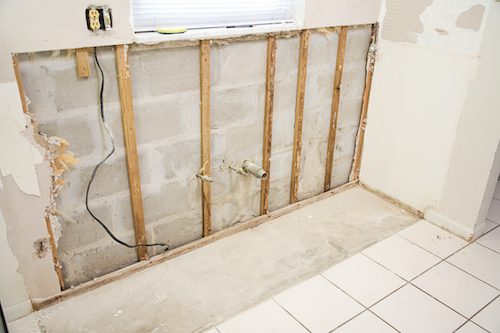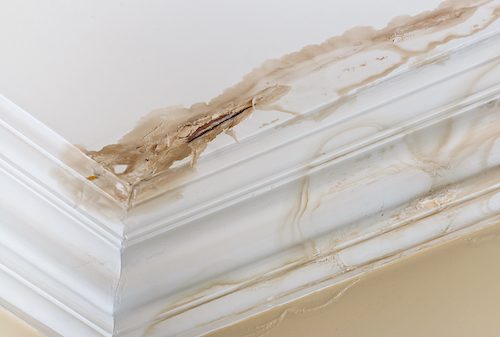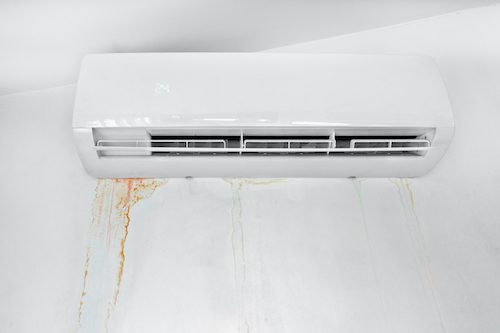Have water damaged walls been on your mind lately? If they have, it's more than likely because you've noticed some of the most common signs that water has already caused significant damage to your home.
When water damage occurs in your home, it's essential to act quickly. Water damaged walls are a serious issue that cannot be ignored and should be addressed immediately by contacting a water damage professional for assistance.
This article will discuss the most common ways water can get into your walls, so you know how to spot them!
Water damage can be caused by several things, from a leaky roof to water seeping through the foundation. However, the most common cause of water damage is water infiltration from the outside environment, including rain, snow, sleet, and even hail.
Plumbing problems, such as a burst pipe or water heater failure, can also cause water damaged walls. And finally, water damage can also result from inadequate ventilation systems or humidity levels that are too high.

There are a few different ways water can get into your walls. The most common way is through burst plumbing or broken appliances. Especially during the winter months, water inside pipes and water heaters can freeze and cause water damage. The ice inside punctures the pipe, or the reduced space inside the line from the frozen water causes a drastic crease in liquid water pressure.
Water can also get into your walls through the foundation. If the water around your home isn't draining correctly, it can eventually seep up through the foundation and cause water damaged walls.
And finally, water can also get into your walls through the roof. So if there are any leaks in your roof, water will eventually find its way inside and damage your walls.
There are six main signs that you have water damaged walls as a result of water infiltration. Homeowners need to identify these problems as soon as possible to take care of them before significant damage occurs.
If water has entered your home, you're likely to notice dampness in areas around the water sources like water heaters, dishwashers, sinks, and washing machines, or areas where you're having plumbing issues.
Water damaged walls from roof leaks are trickier to spot because any walls could be affected. However, the diagnosis is the same—if the walls feel damp, you have water damage.
If you do, in fact, have water damaged walls, you'll notice what's called "drywall rot." This softened drywall indicates water damage because water causes the gypsum material in drywalls to deteriorate over time.
If water has entered your home and is not immediately drying, the water will begin to breed bacteria that can cause a musty smell in your home.

Discoloration in the walls of your home is an indication that water has entered and damaged at least part of the drywall. Discoloration can include watermarks, water spots, mildew stains, or rust-colored watermarks.
Specific areas to check for discoloration are the leaking appliances or areas where you think water entered your home. Also, look for watermarks on your ceilings that can be clues water has penetrated.
Bubbling paint or wallpaper can indicate that you have water damaged walls. This sign is often a result of water leaking through the roof and entering the walls surrounding it, causing water to go back up into the paint or wallpaper.
Paint that's bubbled because water has gotten behind it indicates that mold and mildew growth may occur.
Mold growth signals that water has entered your home, which also indicates water damage. Mold can begin to grow within 24 hours to 48 hours of water entering your walls, so spotting mold can mean water needs immediate drying.
If water is not immediately dried, mold spores can spread to other parts of your home and cause additional health problems.
Mold can be a severe problem for any homeowner. Not only is it an indication of water damage and potential structural damage to your home, but it can also cause health problems. So if you spot mold in your home, it's vital to get the help of a professional right away to clean it up and prevent it from spreading.
Mold spores can cause several different health problems, including:
If you're experiencing any of these symptoms and think they may be related to mold exposure, see a doctor right away.
If you discover water damaged walls, the first thing you need to do is address the water problem. Turning off the water at the source and then getting water damage restoration help from a professional company such as ER Contracting (for those living in Houston) ensures your home and family are safe.
Water must be removed from your home and dried out quickly because leaving water in walls can worsen mold and water damage.
Do not try to repair water damaged walls yourself unless you're a professional and know what you're doing. Even then, avoid making any repairs that will only worsen the water damage (such as removing an existing wall). Doing so can lead to further structural problems and more expensive restoration costs in the long run.

The causes of water damaged walls are varied and can happen anywhere. One of the most common ways water gets into walls is through leaks, which can be trickier to spot because any walls could be affected. However, the diagnosis is the same—if the walls feel damp, you have water damage.
Suppose water has entered your home and isn't drying out rapidly. In that case, bacteria will breed, including mold that may cause a musty smell in your home or discoloration on drywall surfaces like watermarks, water spots, mildew stains, or rust-colored watermarks.
It's essential to get help from professionals as soon as possible so they can restore integrity to your home before it becomes more expensive down the line due to structural damages caused by prolonged exposure. So if you are in Houston or the surrounding suburbs, give us a call today or reach out via our contact page, and we'll be onsite ASAP!